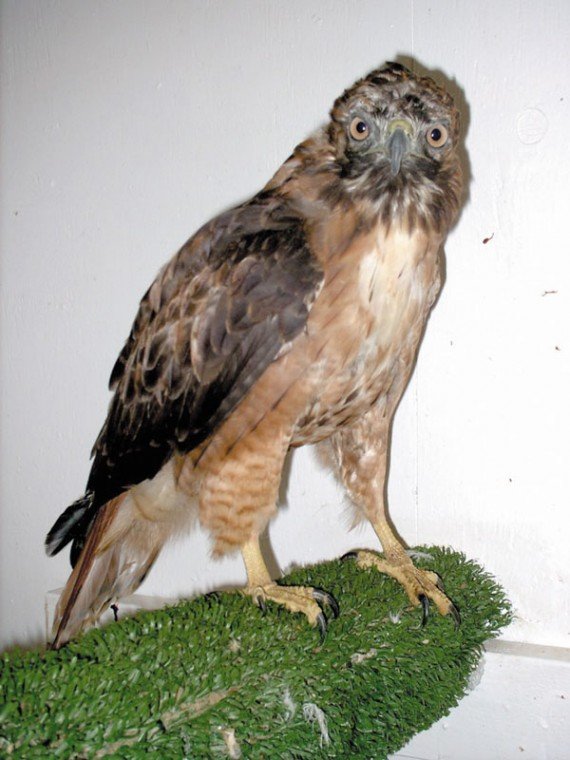The Wildlife Education and Rehabilitation Center has an
excellent reputation in our local community
– and far beyond – for its dedicated care and rehabilitation of
sick and injured wildlife. Apparently it’s so good, that the news
is now being spread via
”
word of beak
”
and some birds are admitting themselves for a little TLC!
The Wildlife Education and Rehabilitation Center has an excellent reputation in our local community – and far beyond – for its dedicated care and rehabilitation of sick and injured wildlife. Apparently it’s so good, that the news is now being spread via “word of beak” and some birds are admitting themselves for a little TLC!
This appeared to be the case of the Red-Tailed Hawk that was seen hanging around outside W.E.R.C.’s large raptor enclosure for several days in June. It wouldn’t fly away as people approached, but perched on a low fence close by.
After observing this abnormal behavior and noticing that it seemed thin, volunteers were able to capture the hawk and bring it to the clinic for a closer examination. It was near death and apparent that it would not have survived much longer.
Besides being severely underweight, there appeared to be an injury to the tail and to the wing, causing it to droop. It is probable that these injuries caused the starving hawk to be attracted to the enticing food put out for the rehabilitating hawks inside the enclosure, since he would have a difficult time hunting live rodents in the wild without the maneuverability provided by healthy wings and tail.
The hawk was brought to Dr. Bellinghausen at the Animal Care Center who examined it and X-rayed the wing. Results showed that, fortunately, the injury was not a fracture but a simple sprain.
Back at WERC, the hawk was kept under close watch and fed lots of small rodents to increase his weight and stamina. After three weeks, he had gained half of his weight and had become very feisty.
It was now time to let him go into the large aviary (the same one he had been hanging around outside of earlier) to strengthen his muscles and to test his flight.
Within a day, the hawk was soaring from high perch to high perch. He no longer allows humans to approach closely. His wings are looking fine, though his tail needs a bit more time to grow out straight. All signs point toward a successful release in early August back to the wilds around W.E.R.C.
W.E.R.C., the Wildlife Education and Rehabilitation Center, provides the community with rehabilitation services for orphaned, injured and sick native wildlife. Through their educational programs, W.E.R.C. encourages a peaceful coexistence between civilization and our native wildlife. To contact W.E.R.C., call (408) 779-9372 or visit www.werc-ca.org.











